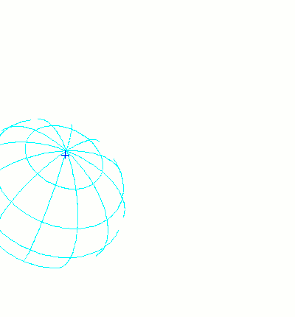INTEGRAL X-rays Earth's aurora
26 January 2016
Normally busy with observing high-energy black holes, supernovas and neutron stars, ESA's INTEGRAL space observatory recently had the chance to look back at our own planet's aurora. |
| INTEGRAL's X-ray view of Earth's aurora. Credit: ESA/INTEGRAL/ E. Churazov (IKI/MPA)/ M. Türler (ISDC/Univ. of Geneva) |
Auroras are well known as the beautiful light shows at polar latitudes as the solar wind interacts with Earth's magnetic field.
As energetic particles from the Sun are drawn along Earth's magnetic field, they collide with different molecules and atoms in the atmosphere to create dynamic, colourful light shows in the sky, typically in green and red.
But what may be less well known is that auroras also emit X-rays, generated as the incoming particles decelerate.
INTEGRAL detected high-energy auroral X-rays on 10 November 2015 as it turned to Earth – although it was looking for something else at the time.
Its task was to measure the diffuse cosmic X-ray background that arises naturally from supermassive black holes that are gobbling up material at the centres of some galaxies.
To achieve this, INTEGRAL records the X-ray brightness with and without the Earth in the way, blocking the background. These types of measurements help astronomers estimate how many distant supermassive black holes there are in the Universe.
Unfortunately, on this occasion, the X-rays from Earth's aurora drowned out the cosmic background – but the observations were not a waste.
They also help us to understand the distribution of electrons raining into Earth's upper atmosphere, and they reveal interactions between the solar wind and Earth's protective magnetic bubble, or magnetosphere.
"Auroras are transient, and cannot be predicted on the timeframe that satellite observations are planned, so it was certainly an unexpected observation," comments Erik Kuulkers, INTEGRAL Project Scientist.
"It's also quite unusual for us to point the spacecraft at Earth: it requires innovative planning by the operations teams to coordinate such a dedicated set of manoeuvres to ensure it can operate safely with Earth inside the instruments' field of view and then return to its standard observing programme.
"Although the original background X-ray measurements didn't go quite to plan this time, it was exciting to capture such intense auroral activity by chance."
For more information, please contact:
Erik Kuulkers
Integral Project Scientist
Directorate of Science and Robotic Exploration
European Space Agency
Tel: +34 918 131 358
Email: erik.kuulkers![]() sciops.esa.int
sciops.esa.int
Markus Bauer
ESA Science and Robotic Exploration Communication Officer
Tel: +31 71 565 6799
Mob: +31 61 594 3 954
Email: markus.bauer![]() esa.int
esa.int

